Click here to view The Communication Bill of Rights

Follow Us on Facebook
View Our Facebook Reviews

|
Visual supports are tools that increase a person's ability to understand language, clarify the expectations in a given setting and/or to provide reassuring structure to the lives of individuals who have stronger visual skills than language or auditory skills. (Quill, 1995, 1998) Since visual images, in this case visual supports, are static and constant across time, they are easier to process and understand that fleeting verbal information. Visual supports are helpful in increasing positive behaviors and reducing frustration because they are concrete, provide a point of reference to support linguistic memory and illustrate vocabulary. For some individuals, visual supports make the difference between success and failure in acquiring and using critical social, behavioral and communication skills.
Some of the many effective visual supports are described below in alphabetical order:
Boundary Settings are physical environmental visual changes that support appropriate behavior by eliminating visual clutter and clearly delineating visual spaces. Clearly established boundaries help teach the child to set their own physical boundaries.
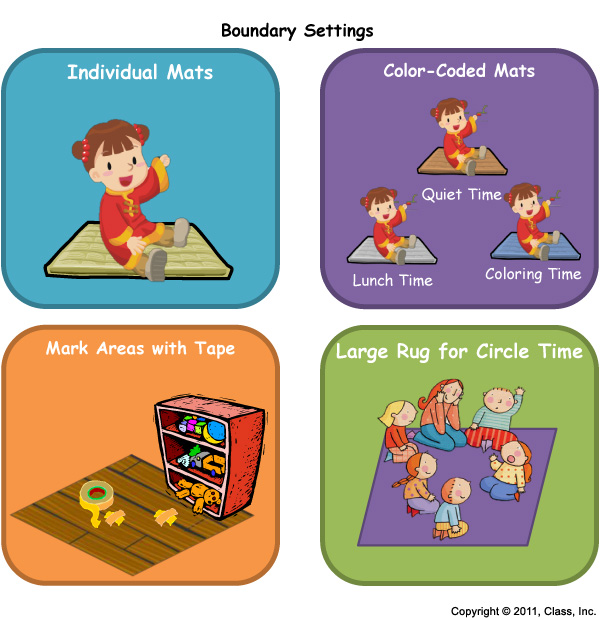
Comic Strip Conversations help children who have challenges with interpreting social situations, understanding speech as quickly as produced in social situations or reading non-verbal cues. (Gray, 1994; Rogers & Myles, 2001) They can also be used from problem solving and conflict resolution and communicating perspectives or feelings.

Conversation Cue Cards or Conversational Starters list a series of phrases or questions that can be used during conversations to assist in reciprocal dialogue.
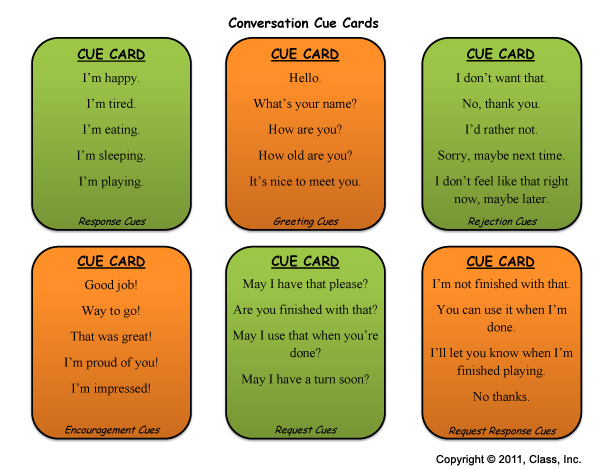
Daily Schedules take the abstract concepts of events occurring in the future and represent the chain of events in a concrete way. This increases one's ability to predict what will be upcoming, thus reducing anxiety, increasing flexibility, improving adaptability, teaches an understanding of time and the ability to predict changes. (Myles, 2005)
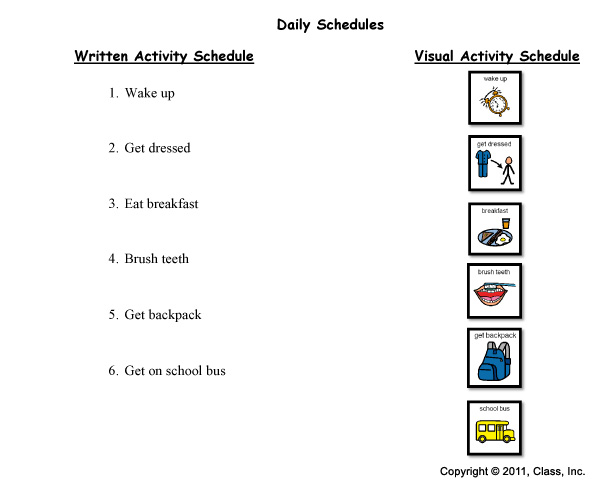
Graphic Organizers enhance learning by organizing material into ways that make it easier to understand and remember. They visually illustrate abstract concepts and relationships.
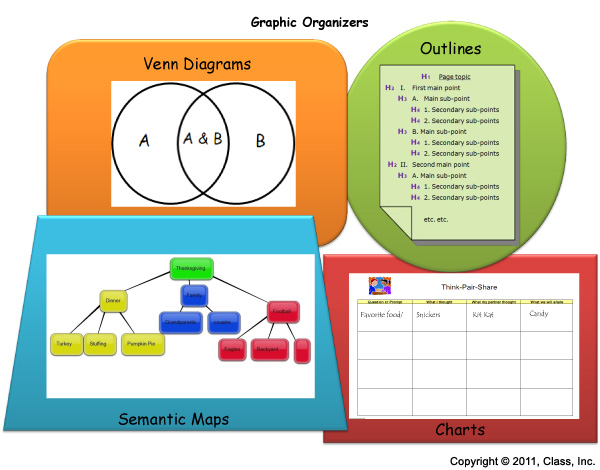
"Home Base" Cards illustrate designated safe places for an individual to go to when they are in need of regulating their own behavior and gain control over their emotional state. (Myles & Simpson, 2003) These places are useful for planning what to do next, reviewing information/rules, coping with stress, de-escalating, and reorganizing when the child is feeling overwhelmed by events, sounds, lights, smells and other sensory experiences. (Faherty, 2000)

Labels increase functional independence and participation by reducing the demands of the brain from having to visually scan an entire area while keeping the target item or location in mind, to just focusing on searching for a specific word or image.

Lists greatly assist personal organization and retention visually organizing information. (Myles, 2005)
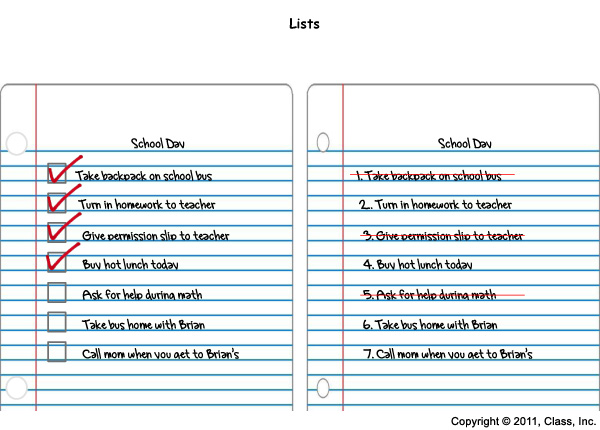
Option Cards provide the child with choices of language or behaviors for specific situations. This decreases reliance on others to verbally prompt choices. (Moore, 2000)

People Locators decrease anxiety by providing information about:
- Who will be somewhere
- Who will be absent
- Who will be arriving later on
- When someone will come
- Where someone is
- When someone will arrive

Reminder Cards give direction in order to increase understanding, independence and appropriate social behaviors.

Reminder Signs are used when several children benefit from the same cue. Teachers can hold or point to a visual symbol instead of having to verbally redirect children to behave more appropriately.
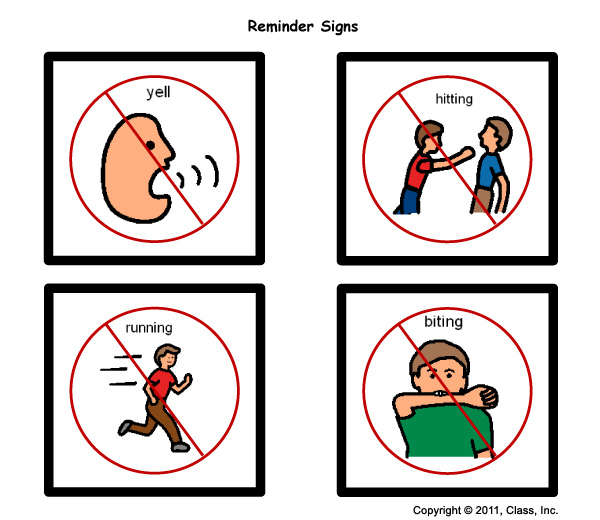
Routine Schedules break larger tasks or activities into their components, much like creating a recipe. This makes the routine easier to follow and independently complete with success, thus improving self-management skills.
Social Stories are concrete word and/or picture stories visually describe the steps and implications of a specific social situation. They clarify concepts that might be confusing and thus aid the comprehension of, and guide the use of a specific social situation. (Quill 1995)

Task Cards are recipes for improving social skills because they increase the accuracy of recalling concepts and rules in the presence of social distractions. Task cards outline the steps that needs to be followed and are written as directives.

Token Economies expand attention spans to tasks, increase the amount of work that is accomplished at a single time and improve one's ability to delay gratification thus enabling them to more readily participate in social, educational and work settings.
Thought Cues help people understand what others might be thinking during social situations.
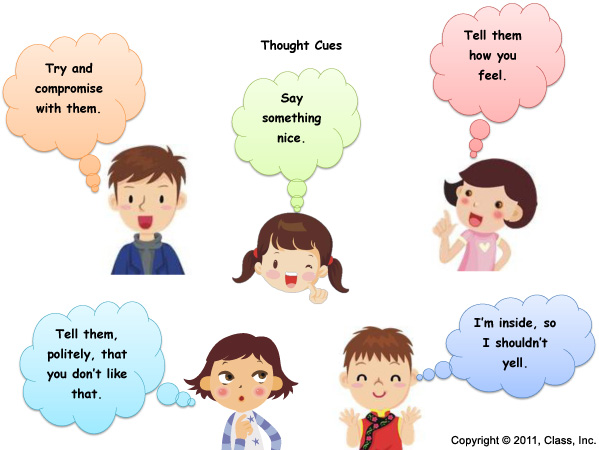
Travel Cards briefly lists academic, behavior, dietary, sensory and communication strategies that support the child's success so that unfamiliar individuals have a recipe for successful interactions.
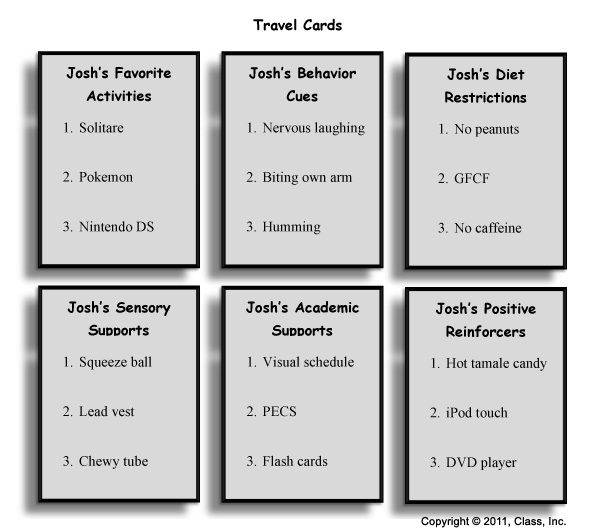
Within Activity Schedules effectively increase independent completion or work and daily life skills. (Hall et al, 1995)
Why Lists are useful to post in a classroom or at the dinner table to remind children why certain rules are important. (Quill, 1995)
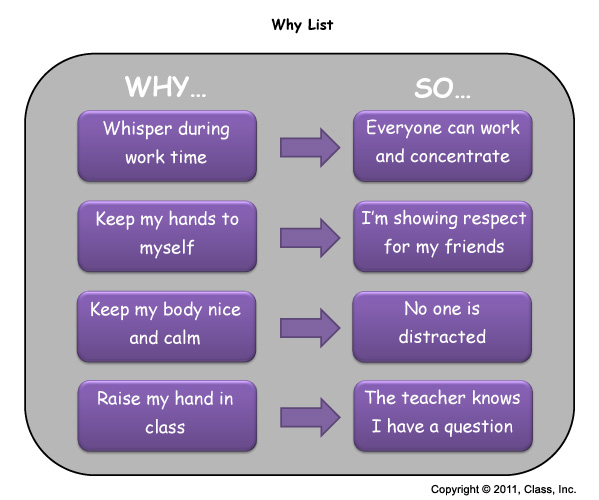
|